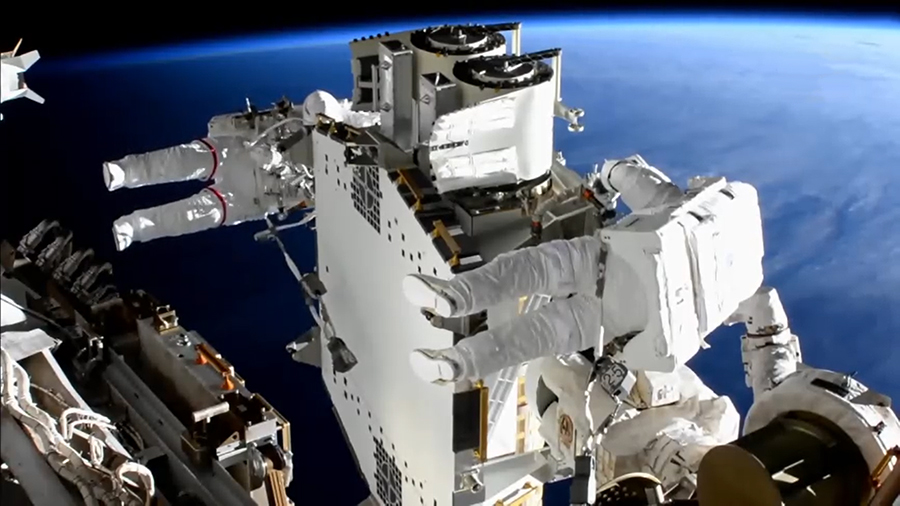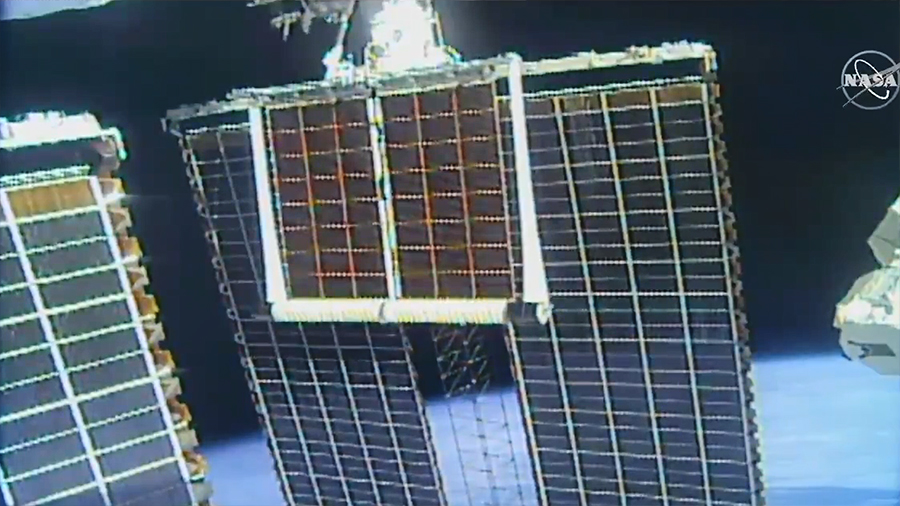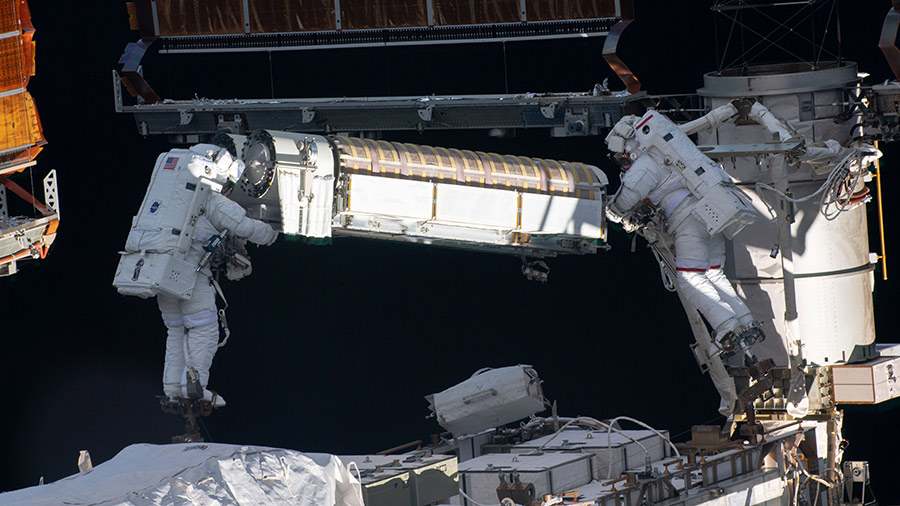
NASA astronaut Shane Kimbrough and ESA (European Space Agency) astronaut Thomas Pesquet are scheduled to exit the International Space Station’s Quest airlock Friday for a spacewalk to install and deploy the second of six new solar arrays to help power the orbiting laboratory.
Live coverage of the spacewalk will air on NASA Television, the agency’s website, and the NASA app beginning June 25 at 6:30 a.m. EDT, with the crew members scheduled to set their spacesuits to battery power about 8 a.m., signifying the start of their spacewalk.
During the planned six-and-a-half-hour spacewalk, Kimbrough and Pesquet will work on the far end of the left (port) side of the station’s backbone truss structure (P6) to upgrade the 4B power channel with the installation and deployment of an ISS Roll-Out Solar Array (iROSA).
Two of the new solar arrays arrived at the station in the SpaceX Dragon cargo spacecraft as part of the company’s 22nd commercial resupply services mission to the station. The spacewalk follows two other recent spacewalks. On June 16, Kimbrough and Pesquet moved the first iROSA to a mounting bracket on the 2B power channel on the port 6 truss, where it was secured in its folded configuration. On June 20, the duo returned to the 2B power channel to complete installation and deployment.
The new solar arrays will augment the existing arrays, which are functioning well but have begun to show signs of expected degradation as they have operated beyond their designed 15-year service life. The first pair of solar arrays were deployed in December 2000 and have been powering the station for more than 20 years.
This will be the 241st spacewalk in support of space station assembly. Pesquet will be extravehicular crew member 1 (EV 1), with red stripes on his spacesuit, while Kimbrough will be extravehicular crew member 2 (EV 2), with an unmarked suit. Operating from inside the station, NASA astronaut Megan McArthur, with NASA astronaut Mark Vande Hei serving as backup, will command the robotic arm to maneuver Pesquet and the array as close as possible to the installation location.
The spacewalk will be the ninth for Kimbrough, and the fifth for Pesquet. The pair arrived for a six-month science mission at the space station April 24 with NASA’s SpaceX Crew-2 mission aboard the Crew Dragon Endeavour.









